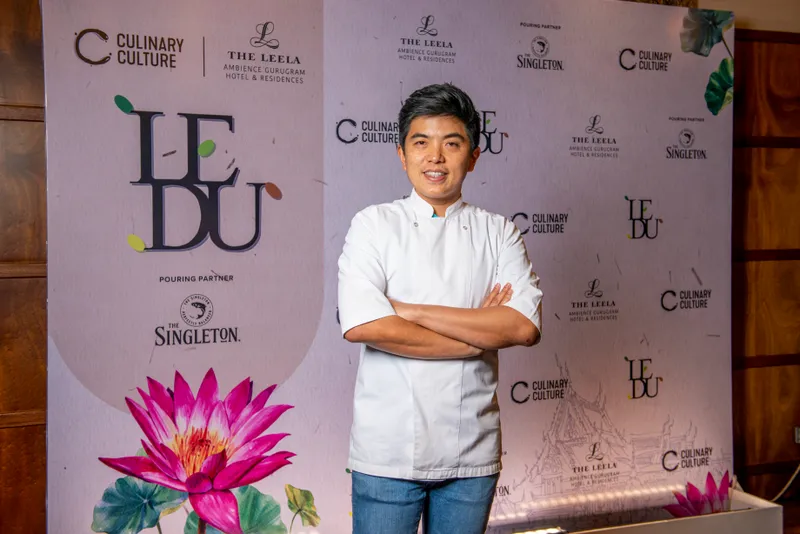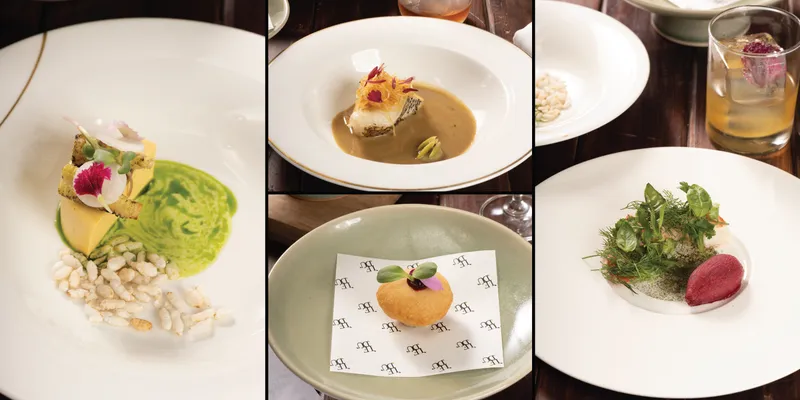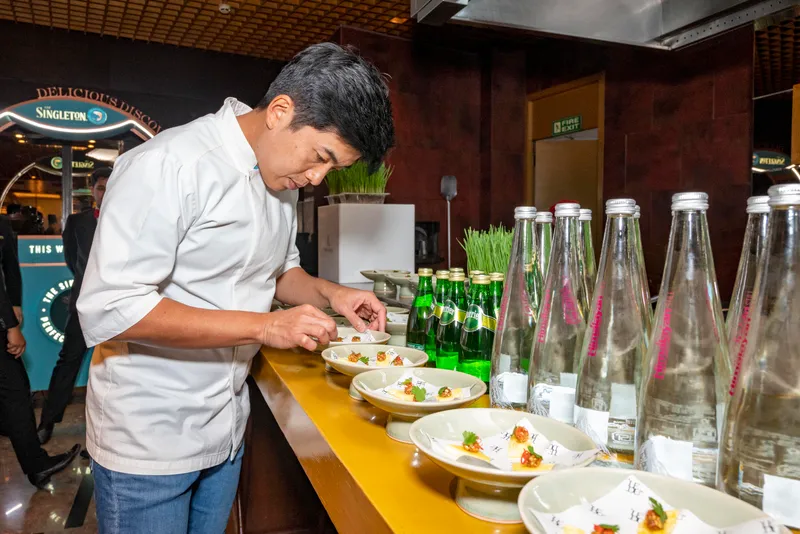Michelin-starred Chef Ton presents Thai on a plate in India’s national capital
YS Life caught up with Chef Ton of Le Du Bangkok to know more about his interpretation of Thai cuisine with a French lens, his motivation to be in India, and more.
The new-age consumer in India is far more evolved today, with a fine appreciation for other cultures. It is this openness to experience good food and beverage that is drawing the who’s who of the culinary world to the country.
Recently, India’s only authoritative culinary movement, Culinary Culture, brought Chef Thitid ‘Ton’ Tassanakajohn, the Executive Chef and Owner of Le Du Bangkok, for an exclusive two-day pop-up to Leela Ambience Gurugram.
For the unversed, he is the only Thai chef who has two restaurants on the prestigious Asia’s 50 best restaurants list–Le Du and Nusara (in the honour of his grandmother who passed on in 2020), both in Bangkok. He is also the name behind homestyle cooking-centred Baan, and two locations of Mayrai Pad Thai wine bar.

Chef Thitid ‘Ton’ Tassanakajohn, the Executive Chef and Owner of Le Du Bangkok
A graduate from the Culinary Institute of America (CIA), Chef Ton has been a part of several Michelin-starred restaurants like Eleven Madison Park, The Modern, and Jean Georges. He’s not only a master at modern Thai cuisine, but also a certified Sommelier from the respected Court of Master Sommelier.
YS Life caught up with Chef Ton, who was ever so warm and genial, to know more about his interpretation of Thai cuisine with a French lens, his motivation to be in India, and more.
The blend of Thai and French cuisines
Le Du sounds more French, but it translates to ‘season’ in Thai. The reason behind choosing this name lies in his passion towards utilising local and seasonal produce for his creations.
“We opened 10 years ago, and ever since, we have been doing something unique that no one has. Blending Thai and French cuisines and using 100% local ingredients has helped us create a distinct identity. Our food tastes Thai but its presentation is French,” he shares.
This attitude also reflected in the eight-course degustation menu that he served while on his visit to India. It was a fine representation of his nuanced approach–representing Thai cuisine from a French-leaning lens.

Coco/Rot, Chilean Seabass, Pani Puri Poh-Tak, and Prawn seaweed and chilli-beetroot sorbet (L-R)
Pune’s cult pub Elephant & Co aspires to be Goa’s next favourite neighbourhood bar
From Coco/Rot, a combination of carrot, coconut, and tom kha prepared into a delicate mousse, to a lobster preparation with fermented bean, northern vegetable curry and stinky sprout, to the prawn served alongside a chilli-beetroot sorbet–each dish created a beautiful symphony of flavours in the palate. My personal favourite was the potato and massaman curry–what a unique twist to the original! Much attention was paid to pairing these dishes with well-balanced cocktails, conceptualised by Singleton India.
“The French technique that I blend in with my cuisine is to bring out its strength, which is either through the sauce or how they cook protein and seafood. Traditional Thai cuisine doesn’t focus much on cooking meat, or making proper stock. I incorporate that into the cuisine at Le Du; it helps upgrade Thai cuisine to the next level,” he reveals.
So, what’s the best wine to pair with his cuisine? Something that has less tannin, says Chef Ton. “If it's white wine, Rieslings work best; in the case of reds, my favorite is Pinot Noir from New Zealand.”
A special spot for India
While the trend of Michelin-starred chefs coming for pop-ups and residencies is growing in India, there’s a special reason why Chef Ton has a special place for the country.
“For me, India is the most fascinating country in the world when it comes to culture, food, and the people. I believe Thai cuisine is heavily inspired by Indian food. I am thrilled to be in India and present my culinary creations. The local customer here is quite experimental in terms of food and beverage. Delhi is one of the fastest-growing cities in the world, especially in the culinary circuit,” he explains.

Chef Ton at work
This is also why he had incorporated pani puri into his India menu–his attempt at winning over the audience here. “While the outer covering is Indian, the filling inside is Thai. It has beetroot, potato, and mushroom,” he says.
When asked which ingredient is by far the most versatile in its use, he again makes a reference to something that’s liberally used in Indian cuisine. “It’s very essential in Thai cuisine too–I am referring to the coconut. That’s because you can use its many parts. You can cook something summery or create a dessert, or everything in between.”
An advocate of sustainability
Sustainability is a buzzword that has taken over the culinary industry, but there aren’t many like Chef Ton who walk the talk. His commitment to sustainability is unparalleled–ever since he started out, he has been conscious of using local and seasonal produce in all his creations and that hasn’t changed, even after he attained fame.
There are also some other steps that the Michelin-starred chef takes. “We work with local farmers and fishermen, as well as other suppliers, to ensure they provide us with the best ingredients with integrity. We are conscious of not destroying the environment, or hurting the welfare of animals. While it is a dream, we can’t be 100% sustainable, but we are trying to be as conscious as possible,” concludes Chef Ton.
(Article was updated to fix typos)
Edited by Megha Reddy







